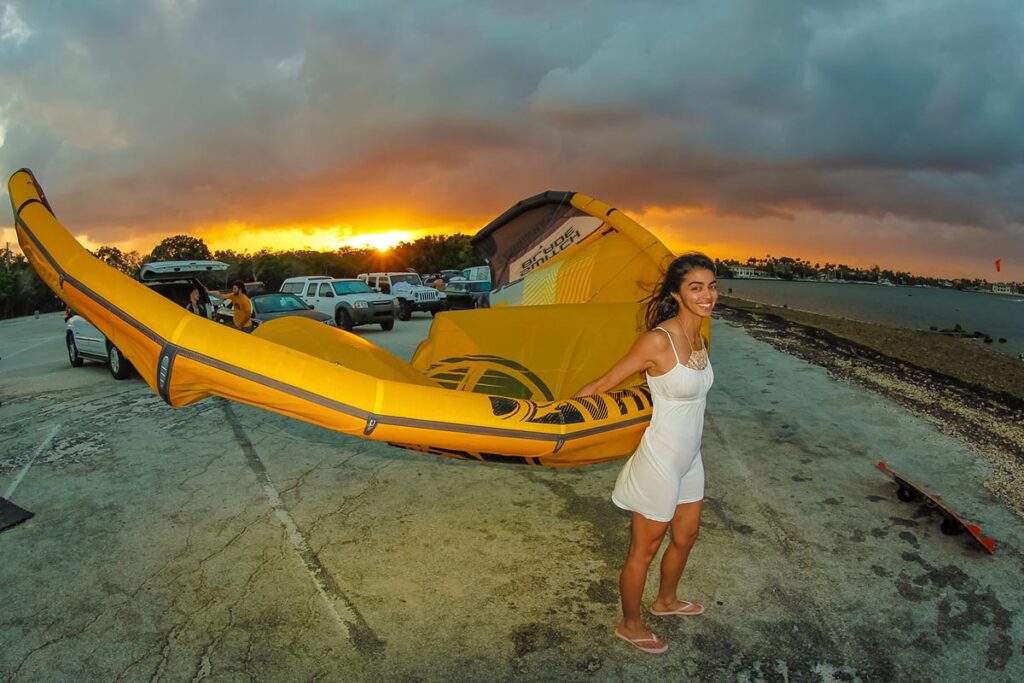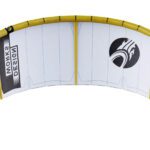
Article:
Kitesurfing Gear Maintenance: Ensuring Safety and Performance.
Kitesurfing, a thrilling water sport that combines aspects of surfing, kiteboarding, and wakeboarding, requires proper equipment maintenance for optimal safety and performance. Regular care and attention to kites, boards, lines, and other gear are crucial to extending their lifespan, preventing accidents, and enhancing the overall kitesurfing experience. This article will explore essential tips for maintaining kitesurfing gear, common mistakes to avoid, troubleshooting and repair techniques, and storage and transport considerations. So, grab your board, and let’s dive into kitesurfing gear maintenance!
Introduction.
Kitesurfing has gained popularity recently due to its adrenaline-pumping nature and exhilarating aerial maneuvers. However, like any other extreme sport, it comes with risks that can be mitigated through proper equipment maintenance. Taking care of your kitesurfing gear ensures your safety and enhances its performance, allowing you to ride the waves with ease and confidence.
Importance of Kitesurfing Gear Maintenance.
Maintaining kitesurfing gear is not only essential for safety but also for extending the lifespan of the equipment. Neglecting proper maintenance can lead to damage, wear, and tear, and decreased performance, ultimately resulting in costly repairs or replacements. Moreover, kitesurfing gear is exposed to harsh elements such as saltwater, sand, and UV rays, which can accelerate corrosion and degradation if not addressed timely. Regular maintenance practices can significantly reduce the risk of accidents, enhance the performance of the gear, and ensure a safe and enjoyable kitesurfing experience.
Storage.
Proper storage is vital to prevent damage to the kite when not in use. Avoid leaving the kite exposed to direct sunlight or extreme temperatures for extended periods, as it can degrade the fabric and weaken the bladder. Store the kite in a cool, dry place away from sharp objects or heavy items that can crush or puncture it. Rolling the kite loosely and storing it in a breathable bag to allow air circulation and prevent condensation is recommended.
Proper Care for Kites.
The kite is the most critical component of kitesurfing gear, and proper care is essential to maintain its performance and longevity. Here are some tips for taking care of your kite:
Cleaning and Drying.
After each kitesurfing session, cleaning and drying your kite thoroughly is crucial. Rinse it with fresh water to remove saltwater and sand, paying extra attention to the leading edge, struts, and bridles. Use a mild soap solution to remove stubborn dirt or stains, but avoid using harsh chemicals that can damage the fabric or bladder. Once cleaned, allow the kite to dry completely in a shaded and well-ventilated area to prevent mold or mildew growth.
Inspection
Regular inspection of the kite is crucial to identify any signs of wear and tear or potential issues. Check the fabric for any rips, punctures, or frayed lines, and inspect the harnesses, valves, and seams for any damage. Replace or repair damaged parts promptly to prevent further deterioration and ensure safe operation. It is also essential to check the kite’s inflation pressure and adjust it according to the manufacturer’s recommendations for optimal performance.
Maintaining Kitesurfing Boards.
The board is another crucial component of kitesurfing gear, and proper maintenance is essential to ensure its durability and performance. Here are some tips for maintaining your kitesurfing board:
Waxing and Cleaning.
Regular board waxing is necessary to maintain its grip and speed on the water. Apply a suitable surfboard wax evenly on the board’s surface, paying extra attention to the areas where your feet usually rest. Use a wax comb or a plastic scraper to remove excess wax and create a textured pattern for better traction. Additionally, rinse the board with fresh water after each session to remove saltwater, sand, and dirt that can damage the board’s surface or bindings.
Inspection and Repair.
Regular board inspection is crucial to identify any signs of damage or wear and tear. Check the board’s surface for any cracks, dings, or delamination, and inspect the bindings, straps, and fins for any loose or damaged parts. Repair any damage promptly using appropriate repair kits or consult a professional. It is also essential to check the board’s fin settings and adjust them according to your riding style and conditions for optimal performance.
Caring for Lines and Other Gear.
The lines and other gear in kitesurfing, such as harnesses, safety leashes, and control bars, also require proper maintenance for safe and efficient operation. Here are some tips for caring for lines and other gear:
Checking Lines.
Regularly inspect the lines for any signs of wear and tear, such as fraying, knots, or twists. Replace any damaged lines promptly to prevent accidents or equipment failure. It is also crucial to check the line lengths and ensure they are equal to maintain the kite’s balance and stability.
Cleaning and Storing Lines.
Clean the lines with fresh water after each session to remove saltwater, sand, and dirt that can cause abrasion or corrosion. Allow the bars to dry completely before storing them to prevent mold or mildew growth. Avoid storing the lines in direct sunlight or extreme temperatures, as it can weaken the fibers and shorten their lifespan. It is recommended to coil the lines neatly and store them in a dry and well-ventilated area to prevent tangling or knotting.
Maintenance of Harnesses, Safety Leashes, and Control Bars.
Regularly inspect your harness, safety leash, and control bar for wear and tear, such as frayed straps, loose buckles, or damaged lines. Replace or repair any damaged parts promptly to ensure safe and comfortable riding. Clean the harness with fresh water to remove saltwater, sand, and dirt, and allow it to dry completely before storing it in a cool and dry place. Store the safety leash and control bar in a dry and well-ventilated area to prevent corrosion or damage to the lines or connectors.
Tips for Longevity and Performance.
In addition to regular maintenance, here are some additional tips for maximizing the longevity and performance of your kitesurfing gear:
Avoiding Exposure to Extreme Conditions.
Avoid exposing your kitesurfing gear to extreme weather conditions, such as high winds, extreme temperatures, or rough waves. Extreme conditions can stress the gear excessively and cause damage or premature wear and tear. If the conditions are unsuitable for kitesurfing, it’s best to avoid using your gear or take necessary precautions to protect it.
Proper Handling and Transport.
Proper handling and transport of your kitesurfing gear are crucial to prevent damage during transportation. Avoid dragging or throwing the gear on the ground, and handle it carefully when packing or unpacking. Use protective covers or bags to prevent scratches, dings, or other damage during transport, and secure the gear properly to prevent it from shifting or getting damaged in transit.
Following Manufacturer’s Instructions.
Always follow the manufacturer’s instructions for assembling, using, and maintaining your kitesurfing gear. Different brands and models may have specific care and maintenance requirements, and following the manufacturer’s instructions can ensure optimal performance and prevent voiding any warranties.
Regular Gear Check.
Perform regular gear checks before each kitesurfing session to ensure all the components work well. Check the kite’s harnesses, valves, and inflation pressure; inspect the board’s surface, bindings, and fins; and check the lines, harness, safety leash, and control bar for any signs of wear or damage. Address any issues promptly to prevent accidents or equipment failure.
Conclusion.
Proper maintenance of kitesurfing gear is crucial for safety and performance. Regular cleaning, drying, storage, inspection, and repair of kites, boards, lines, harnesses, safety leashes, and control bars are essential to ensure the longevity and optimal performance of the gear. Additionally, avoiding exposure to extreme conditions, proper handling and transport, following the manufacturer’s instructions, and regular gear checks are critical practices for maintaining kitesurfing gear in top condition. By taking good care of your gear, you can enjoy safe and thrilling kitesurfing experiences for years!
FAQs.
- Q: Can I use regular soap or detergent to clean my kite? A: Using a mild soap solution designed explicitly for cleaning kitesurfing gear is best. Avoid using harsh chemicals that can damage the fabric or bladder.
- Q: How often should I inspect my kitesurfing gear? A: It’s recommended to perform regular inspections before each kitesurfing session and address any issues promptly.
Q: Can I store my kitesurfing gear in direct sunlight? A: It’s best to avoid storing your gear in direct sunlight or extreme temperatures, as it can weaken the materials and shorten their lifespan. Store your gear in a dry and well-ventilated area to prevent damage from sunlight or extreme temperatures.
- Q: Can I repair my kitesurfing gear myself? A: Following the manufacturer’s repair instructions or seeking professional assistance to ensure proper repairs and prevent further damage is recommended.
- Q: How often should I replace my kitesurfing lines? A: Kitesurfing lines can wear out over time due to UV exposure, salt water, and normal wear and tear. Inspecting them regularly and replacing them if signs of wear or damage are evident is recommended.
- Q: Can I use my kitesurfing gear in any weather condition? A: Using your kitesurfing gear in suitable weather conditions that match your skill level is important. Avoid using your gear in extreme weather conditions that can cause excessive stress on the gear and lead to damage or accidents.
- Q: How can I extend the lifespan of my kitesurfing gear? A: Regular maintenance, proper storage, handling, and transport, following manufacturer’s instructions, and avoiding exposure to extreme conditions can help extend the lifespan of your kitesurfing gear.
- Q: Can I use my kitesurfing gear without proper maintenance? A: Proper maintenance is crucial for the safety and performance of your kitesurfing gear. Neglecting maintenance can lead to gear failure, accidents, and reduced gear lifespan.
- Q: Can I store my kitesurfing gear wet? A: Dry your gear thoroughly before storing it to prevent mold, mildew, and material damage. Avoid storing your gear wet, as it can cause corrosion, odor, and damage to the fabric.
- Q: Can I wash my kitesurfing gear in a washing machine? A: It’s not recommended to wash your kitesurfing gear in a washing machine, as it can cause damage to the fabric, valves, or bladders. Using a mild soap solution and hand washing your gear is best.
Author
Latest entries
 WatersportsSeptember 16, 2024Cabrinha Moto X: Enjoy the Ride
WatersportsSeptember 16, 2024Cabrinha Moto X: Enjoy the Ride WatersportsMay 19, 2024Cabrinha 2024 Moto XL Review: The Ultimate Lightwind Kite
WatersportsMay 19, 2024Cabrinha 2024 Moto XL Review: The Ultimate Lightwind Kite WatersportsDecember 16, 2023Kiteboarding Travel
WatersportsDecember 16, 2023Kiteboarding Travel WatersportsDecember 14, 2023RED BULL KING OF THE AIR 2023
WatersportsDecember 14, 2023RED BULL KING OF THE AIR 2023




